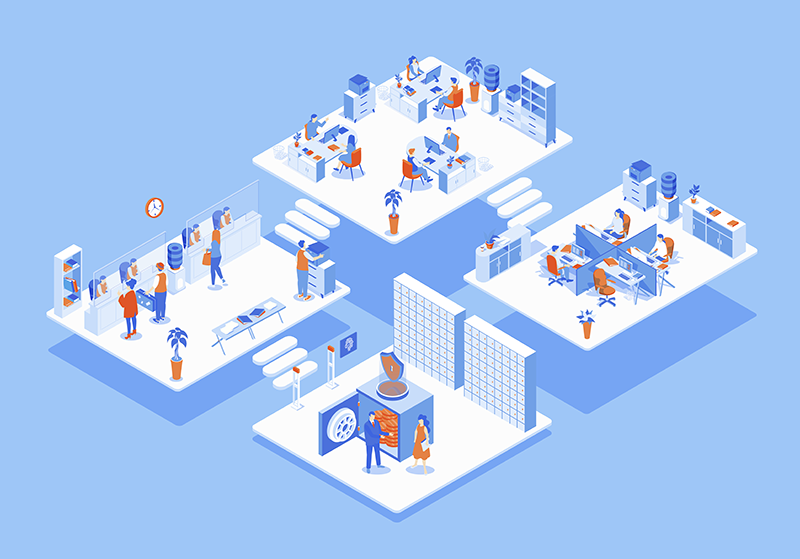In an era where customer expectations are evolving at a rapid pace, businesses must go beyond just delivering products and focus on creating holistic experiences. Service design has emerged as a powerful methodology that transcends traditional boundaries, placing the user at the centre of the design process. This article explores the essence of service design, its principles, and the transformative impact it can have on businesses.
Understanding Service Design:
Service design is a multidisciplinary approach that aims to improve the quality and interaction between service providers and users. Unlike traditional design practices that often focus on tangible products, service design encompasses the entire customer journey, from initial touchpoints to ongoing interactions and support.
Key Principles of Service Design:
-
User-Centricity: At the core of service design is a deep understanding of the end-users. By empathising with their needs, desires, and pain points, designers can create solutions that resonate with and enrich the user experience.
-
Holistic Approach: Service design considers the entire service ecosystem, involving all stakeholders, touchpoints, and processes. This holistic perspective enables designers to identify and address potential challenges at every stage of the customer journey.
-
Co-Creation: Engaging stakeholders, including both customers and employees, in the design process fosters collaboration and ensures that the resulting services meet real-world needs. Co-creation allows for diverse perspectives, leading to more innovative and effective solutions.
-
Iterative Prototyping: Service design often involves creating prototypes and testing them in real-world scenarios. This iterative approach allows designers to gather valuable feedback, refine their concepts, and continuously improve the service before its full implementation.
Transformative Impact of Service Design:
-
Enhanced Customer Experiences: By focusing on the entire customer journey, service design can create seamless and enjoyable experiences. This, in turn, builds customer loyalty and encourages positive word-of-mouth, fostering a strong brand reputation.
-
Efficient Operations: Service design doesn’t just benefit customers; it also optimises internal processes. Identifying and streamlining workflows can lead to increased efficiency, reduced costs, and improved employee satisfaction.
-
Innovation and Competitive Advantage: In a crowded marketplace, innovation is key. Service design encourages businesses to think beyond traditional boundaries, fostering the development of unique and compelling services that set them apart from competitors.
-
Adaptability to Change: Service design equips businesses with the flexibility to adapt to evolving customer needs and market trends. The iterative nature of the process allows for quick adjustments, ensuring that services remain relevant in a dynamic environment.
Service design is a holistic approach that involves designing and improving services with a focus on providing a better customer experience.
Collaboration with cross-functional teams to create and enhance services is key.
Here are some common deliverables that are produced in collaboration:
- Service Blueprints
Visual representation of the end-to-end service, detailing customer interactions, front-stage and backstage processes, and touchpoints. - Customer Journey Maps
Visualisations that outline the customer's experience across various touchpoints, helping to identify pain points and opportunities for improvement. - Persona Profiles
Detailed descriptions of user personas, including their needs, goals, behaviours, and preferences to inform service design decisions. - Service Prototypes
Tangible or digital representations of service concepts, allow stakeholders to experience and test the proposed service before implementation. - Service Ecosystem Maps
Illustrations of the broader context in which the service operates, identifying external factors, stakeholders, and dependencies. - User Flows
Diagrams that illustrate the steps users take to achieve specific goals within the service, highlighting decision points and interactions. - Service Design Specifications
Detailed documentation outlining service design recommendations, guidelines, and standards for implementation. - Touchpoint Designs
Detailed designs for individual touch-points within the service, such as websites, apps, physical spaces, or customer service interactions. - Usability Testing Reports
Documentation of usability testing sessions, including insights and recommendations for refining and improving the service. - Service Metrics and KPIs
Recommendations for key performance indicators (KPIs) and metrics to measure the success and impact of the service. - Stakeholder Workshops and Facilitation
Plans and documentation for workshops aimed at involving stakeholders in the co-creation and improvement of services. - Service Improvement Roadmaps
Long-term plans outlining phased improvements to the service, considering both short-term wins and strategic advancements. - Communication and Presentation Materials
Visual presentations, reports, and other communication materials to effectively convey service design concepts and recommendations to stakeholders.
These deliverables are part of a collaborative process and are often iterated based on feedback, testing, and evolving business needs throughout the service design lifecycle.
Case Study: Airbnb
One exemplary case of successful service design implementation is Airbnb. By understanding the desires of travellers for unique, personalised experiences, Airbnb transformed the hospitality industry. The platform's user-friendly interface, transparent communication, and emphasis on community building have created a revolutionary service that goes beyond just accommodation.
Conclusion:
In the quest for sustainable business success, service design emerges as a vital tool. By prioritising user-centricity, embracing a holistic approach, and fostering collaboration, businesses can create services that not only meet but exceed customer expectations. In an era where experiences matter as much as products, service design stands as a beacon, guiding businesses toward a future where innovation and customer satisfaction reign supreme.





